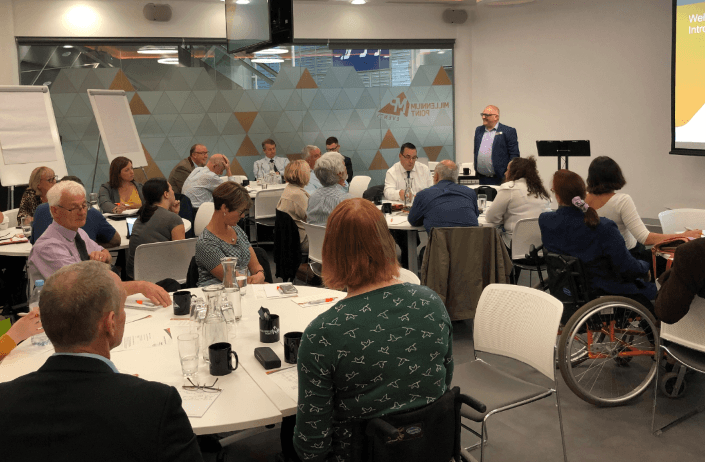
blog: Community Transport and Rail - A Shared Journey
Thursday 17th October 2019
Last month, over 40 people gathered for a regional ‘learnshop’ that was designed to support greater integration between two transport sectors that have rarely engaged on any scale before - community transport and rail. The session sought to broker relationships and develop the propensity for supporting improved access to railway stations across both the West Midlands Railway (WMR) and London Northwestern Railway (LNR) networks.
Purpose of the 'learnshop'
The design, development and delivery of the 'learnshop' was the final piece of a study being undertaken by ITP on behalf of West Midlands Trains (WMT). The study firstly aimed to gauge the interest of the community transport (CT) sector by collaborating with the rail industry; and secondly, to filter down the requirements for mobilising initiatives at ‘hotspot’ stations that are ripe for future pilot schemes.

Emphasis was placed on building consensus towards future outcomes. Our methodology consisted of:
- A Public Transport Review: Developing a matrix that assesses the quality and quantity of public transport provision to and from selected stations across the WMR and LNR rail networks.
- A Gap Analysis: Undertaking a high-level examination of the current local transport mix and aspirations of the public transport / community transport sectors across each network and local authority area.
- A Targeted Approach: Highlighting ‘hotspot’ stations whereby enthused providers, with an appetite for diversification, would be ideally placed to meet user demand and the specific objectives of the rail industry. This includes tackling ‘railheading’ and site parking constraints, boosting the door to door journey experience and, ultimately, increasing farebox revenue.
Community transport providers expressed their aspirations around future operations at the 'learnshop' and the project team communicated the availability of support streams, such as Community Rail Partnerships, alongside emerging funding opportunities to help people calibrate the type of support that they would want for the type of service they felt comfortable pursuing. This was, and is to be, led by the community transport sector.
Integrating services
A key part of the session focussed on how community transport could help satisfy the objectives of the rail industry. Ideally, prospective services operated by enthusiastic community transport providers would be layered over stations with access challenges where solutions can be sought for improving the door-to-door experience. This took advantage of the knowledge-base developed for each station as a result of this study and ITP’s ongoing support with the WMT Station Travel Plan (STP) programme.
The feedback from providers suggests that whilst upholding existing services is a key priority, there is interest in building in the rail offer and appeal beyond conventional user audiences. Equally, it was acknowledged that there would be some variation in applicability across providers whilst the sector itself is currently undergoing scrutiny in the wake of local government austerity.
Investing funding towards the likes of integrated ticketing software, station staff equalities training and improvements in the physical environment to reduce the interchange penalty were also highlighted as considerations. These sat alongside outlining the financial risks to individual providers by deploying resources where user demand was not accurately or effectively harnessed.
In a society where driving is so embedded and normalised, it was widely acknowledged by community transport and rail operators that their services need to be attractive, tailored to the demographic audience, and deployed in conjunction with other site and sub-regional incentives. Market stalls were introduced at the 'learnshop' to offer business coaching to providers, with breakout sessions seeking to broker a joined-up approach between local authorities and sector representatives. With providers’ experience and resourcing varying considerably, the breakout sessions were constructive in networking and providing small-scale practical advice to take away and pursue.
Next steps
ITP combined knowledge and experience from community transport operations and station travel planning, to begin devising and eventually implementing workable pilots. We hope that the next steps of the study will have the benefit of using new evidence from the station travel planning process for each station to develop bespoke services that connect communities and offer a seamless door-to-door experience for a range of people. We envisage this will involve working in conjunction with individual providers at specific stations and using our experience of delivering travel behaviour change programmes to nudge people towards sustainable travel options.
We are currently engaged in other exciting projects around the UK involving the rail industry and both public and community transport sectors to improve accessibility and connectivity. If you would be interested in finding out more about our work in Gloucestershire and Scotland and how we could work with you in the future, please contact Peter Hardy, ITP’s Technical Director via our Get In Touch page.
